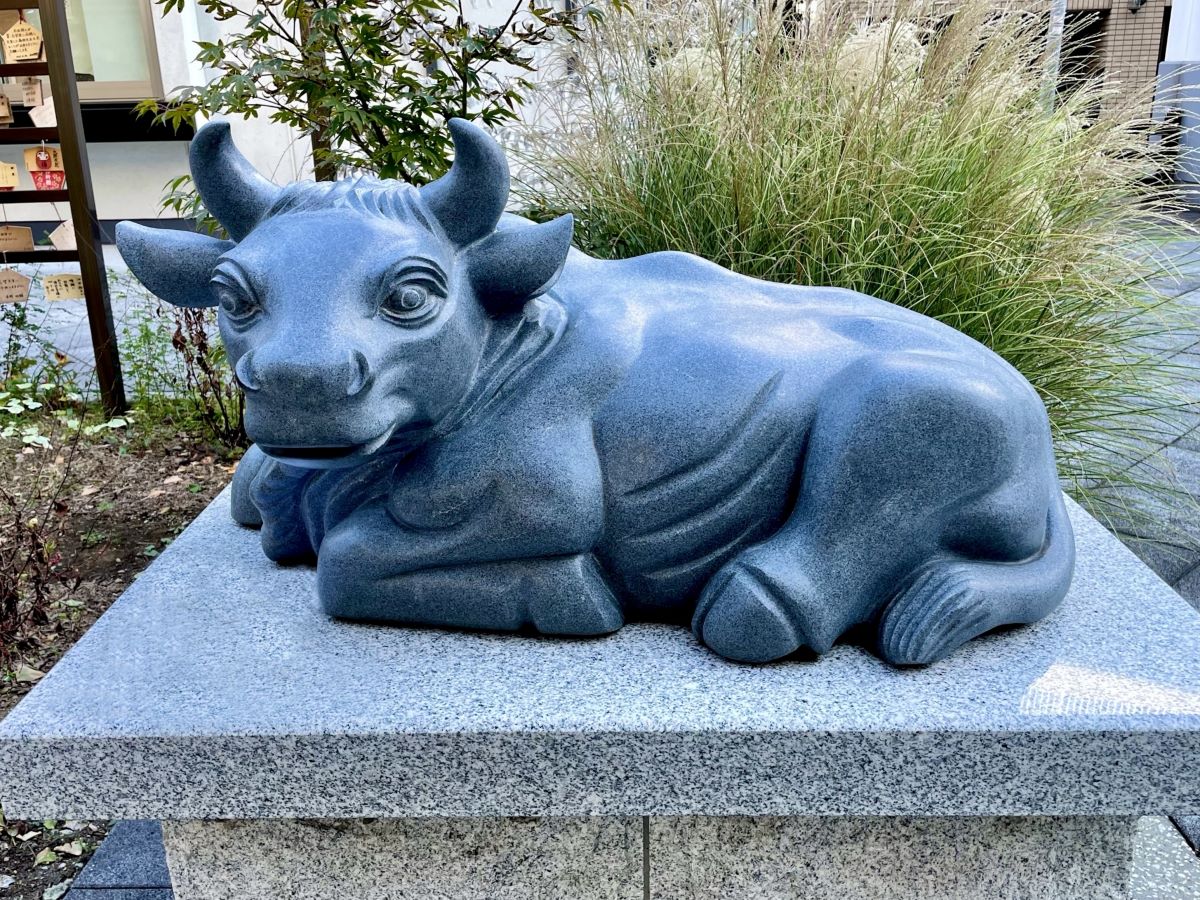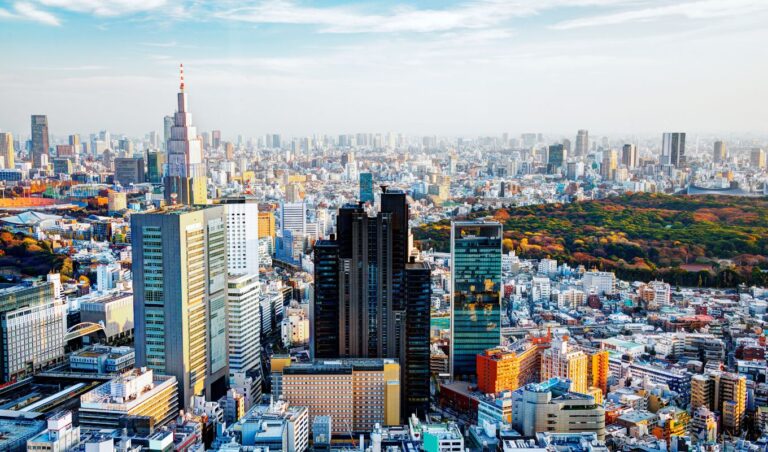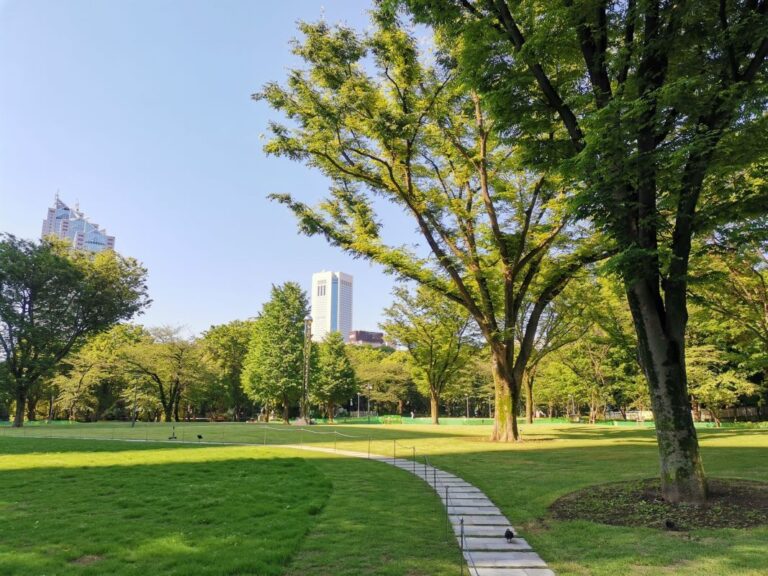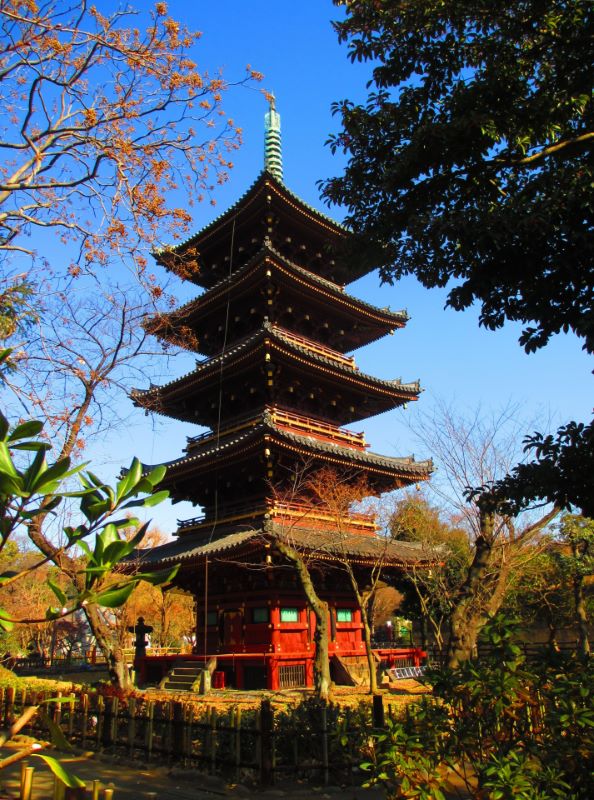Naruko Tenjin Shrine sits between high-rise buildings on the way down from Nishi-Shinjuku to Ome Kaido to Kanda River and Yodobashi.
The god of worship is Sugawara Michizane, and the history of the shrine is described on the information board as follows. Naruko Tenjin Shrine, which has spun a history of more than 1,000 years
This area was once called Kashiwagi Naruko, where the Grand Shrine (Amaterasu Omikami, the deity Amaterasu) was originally enshrined, and a clean area with pine and oak trees spread out.

In the 3rd year of the Heian period (903), Saeki and Saigu, who had received the news of the death of Sugawara no Michizane in Dazaifu, Kyushu, in the eastern part of Japan, were extremely saddened and brought back a statue of Sugawara no Michizane from Rakuyo (Heian-kyo) to Kashiwagi Village.
They were so saddened by the news of the death of Sugawara no Michizane, that they brought back to Kashiwagi Village from Rakuyo (Heian-kyo) a statue carved before his death.
The area was then designated as the sacred ground of Suga Shrine, and this shrine was established to enshrine the god of peace and the way of letters.

Later, the third Tokugawa Shogun, Iemitsu Iemitsu, gave the land of Kashiwagi Naruko to Kasuga-no-chowa, and the shrine was built as Tenmaten Shrine by the request of the bureau (Tsubouchi). In 1894, it was renamed Nariko Shrine, and in 1928, it was renamed Nariko Tenjinsha.
After that, it was destroyed by fire in the war and rebuilt in 1966, and was rebuilt in 2014.
On the main approach from Ome Kaido to the main shrine, Ebisu and Daikokuten, the seven gods of good fortune, are enshrined, and Bishamonten is enshrined when you pass through the torii gate.
The Seven Gods of Good Fortune Tour is said to remove seven kinds of misfortune and bestow seven kinds of happiness, and Nihonbashi, Asakusa and Fukagawa are famous for this tour.

In the precincts of the shrine, there are various deities such as Tenjin-sama in the main shrine, Naruko Inari Shrine, Rikishi, and Nadegude-gyu.
The deity enshrined at Naruko Inari Shrine is Ukamitama no Mikoto, who is worshipped at Fushimi Inari Taisha Shrine in Kyoto, and is believed to have divine virtues for agriculture, prosperous business and worldly benefits.
Naruko Tenjin Shrine’s Rikiishi, designated as a Tangible Folk Cultural Property by Shinjuku City, is a large egg-shaped stone used for strength contests at festivals such as the Grand Festival, and weighs about 150 to 218 kilograms.

The names carved on the stone are said to be those who lifted it. It seems to be important for petting cows to “touch them with all your heart”.
The feeling of the slippery stone and at the same time, I felt a sense of peace and calm, and I could feel the blessings. Nariko Tenjinsha is a sacred area with the key words of “go around, learn, and feel”, all of which are popular as power spots.






